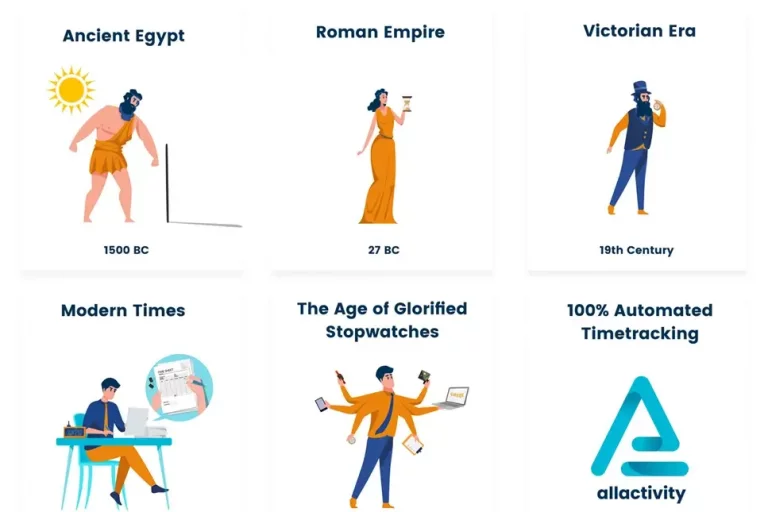5 Secrets for Boosting Operational Effectiveness

Every organization has its own special challenges, so the specific aspects of operational effectiveness will vary from company to company. These are just a few things that you can do to start on the right foot!
In the world of business and work, collaboration is generally considered to be the number-one solution for ridding businesses of inefficiencies, increasing productivity, and fostering a more engaged workforce. And while this might be true, tools—such as AllActivity—have brought us closer together, there’s still one crucial aspect of it that often gets overlooked, which is operational effectiveness.
What is Operational Effectiveness?
Operational effectiveness essentially refers to the high-performance level an organization can achieve if it could establish a clear vision and channel resources into that roadmap. In other words, operational efficiency involves some of the best practices and critical success factors that translate directly into productivity, agility, and better business outcomes.
While it might sound like a loftily named concept, operational effectiveness has a huge impact on company performance and efficiency! It is not just a buzzword; it’s something that leaders and teams can build upon to help them achieve their long-term goals.
Operational effectiveness is the ability to effectively deliver on time and on budget. At first glance, it seems like a challenging metric to measure, but there are several things you can do to reach this performance level.
Like many tools and strategies, there’s no silver bullet to boost operational effectiveness. This checklist at least provides five actionable tips to try that cover the most common problems teams face.
Claim your AllActivity
software demo
Ask for a complete 2-month free trial and start achieving better results from the beginning!
- Use Software to Increase Your Team’s Productivity
- Use an Automated Time Tracker to Effectively Manage Your Projects
- Establish Objectives and Key Results to Set the Right Priorities
- Use an Employee Feedback Tool to Improve Employee Experience
- Define and Track Key Metrics to Measure Productivity
- Conclusion
How often do you check in with your team members to make sure they’re on track? If you’re like most business owners, you probably don’t have a set time where you check in with your staff on a regular basis. You might do it every now and then, but most of the time, it’s only because something has come up that you’ve found out things weren’t going according to plan.
That’s a problem—because by the time you find out about an issue, it’s already too late to fix it! Besides, it will impact the team’s and the company’s overall productivity. And if you haven’t been checking in with your team regularly enough, they may not feel comfortable letting you know when things aren’t working out as they should be.
The good news is that there’s an easy solution: You can use a digital tool that automates the whole thing, giving everyone a set time and place to check in with each other.
You can use a tool like Allactivity as your operations management software to give employees a clear list of tasks that need to be completed by the end of the day, so that everyone knows what needs to be done. It also helps you see where there might be gaps or bottlenecks in your process.
When your employees are productive, they can accomplish more in less time. This means they can produce better results while also having more time available for other tasks and projects. To improve productivity, many organizations are turning to software solutions that automate manual processes so employees can focus on more meaningful work.
Bottom line: With everyone on the same page, it’s much faster to get things done. When you have a standard operating procedure that clearly outlines your expectations for each position, you can avoid arguments, mistakes and misunderstandings.
Whether you are leading a group on a small collaborative project, running a larger organization, or trying to settle a workplace dispute within your team – if you are signed up to the relational leadership model, stick to the above principles and it will be made more effective than ever before. But don’t take our word for it; read on for more concrete advantages of this leadership style.
If your employees are working on multiple projects at once, the chances of falling behind or missing important deadlines is high. If you can’t manage competing project timelines, then you’ll likely find that resources are being wasted and your business is losing money!
With so many tasks and responsibilities on your plate, it can be difficult to keep up with everything. It’s easy to become overwhelmed and lose track of what needs to be done when.
But there’s an easy way to ensure that all of your projects are being handled efficiently and effectively—use an automated time tracker for your whole organization.
By using a time tracker, you’ll be able to monitor project progress, delegate work more effectively, identify problem areas within the team, and better manage deadlines.
The best way to enhance operational effectiveness is to manage people and resources wisely. With the right tools, you can monitor how employees use their time and what projects take up their efforts. In this way, you will be able to see if something can be done in a more efficient manner. With such knowledge, you will be able to use your workforce better and boost operational effectiveness.
If you don’t have a clear record of everything that’s currently in progress, you won’t be able to effectively manage projects. And if you’re not able to effectively manage projects, it can lead to bottlenecks in the production line, cost overruns and missed deadlines.
Related: 3 Benefits of Automated Timetracking
In the first tip we talked about having a good productivity-focused software, and in the second one, we discussed the importance of having a Time Tracker for the organization. Now, it’s about Objectives and Key Results.
Objectives and Key Results (OKRs) are an amazing tool for setting the right priorities for your business, and for making sure each team member is aligned with the company’s values and goals. They help you focus on what really matters.
First, Objectives and Key Results allow you to set specific, measurable objectives that are clearly defined. This ensures that your employees are always aware of what they must do and how they must do it. They can easily understand the reasons behind the tasks they’re doing, and what it means for the organization.
Secondly, they also help you communicate how your company’s objectives align with the goals of each department or employee. With such data, everyone works towards a common goal: it’s about being a team and not about competing.
Objectives and Key Results will not only help you set clear objectives for your employees, but also inspire them to reach those objectives. They can help you measure and track performance continuously instead of waiting until the year-end review session to discuss achievements or failures.
Objectives and Key Results are used by some of the most innovative companies in the world like Google, LinkedIn, Airbnb, and many other big brands. If you’re new to this goal-setting methodology, here’s a brief overview of how it works:
How can you be sure that your employees are happy? How do you know if there are any problems in your team? How can you find out what the common issues are and how to fix them? Even though these questions might seem obvious, there is a simple way to answer them: just ask them, your employees! Also, give them a chance to share their feedback with each other.
It’s crucial for managers to understand how the company affects their lives and what can be improved. The best way to find out about it is to use an employee feedback tool that allows employees to express their opinions and share ideas.
Many tools exist on the market right now, so you have plenty of options when it comes to choosing the one that will work best for your company. However, many teams still don’t use such tools because they think they are too expensive or complicated. The good news is that this is not true! There are some great options that won’t cost you much, so there is no reason why you shouldn’t try one out.
AllActivity, for instance, is an employee feedback tool that makes all PC users 40-60% more efficient. It enables employees to give honest feedback about themselves and about each other, in an automated, secure, and privacy-friendly way.
As the saying goes, employees don’t quit companies, they quit managers! The quality of a manager-employee relationship is essential for employee retention, job satisfaction and productivity. That’s why you should give your employees a chance to feedback the management and improve their experience. This will help them feel more engaged with their work and boost team morale.
Once you’ve identified the most important tasks to focus on, your next step is to measure their productivity. If you’re not sure where to start, ask yourself these questions:
- What are the key metrics of each individual task?
- What are the most important metrics for the company as a whole?
- How do you track these metrics currently?
Once you’ve answered those questions and identified your key metrics, it’s time to start tracking them daily. Be sure that your metrics are measurable and relevant to your operational goals: You’ll want to measure things like finished projects, number of units produced, percentage of defectives, or customer satisfaction. It’s also helpful to use data from similar companies in your industry—you can find this information in industry reports and trade journals—to come up with benchmark metrics for comparison purposes.
This is where the rubber meets the road! If you want to know whether you’re making progress, you need to define what that looks like and how it will be measured—before you start. Keeping track of key metrics can tell you whether your productivity is going up or down, and what needs to change to keep going in the right direction.
When tracking metrics, be careful not to get distracted by the numbers or forget why they were created in the first place. You should have a very clear idea of what key results would indicate success and which ones could signal failure—and make those expectations known ahead of time so no one will feel blindsided if things don’t go exactly as planned. And above all
else, remember that the purpose of tracking metrics is not only to measure success but also to improve it: use them like a compass rather than a scale.
It’s never too late to find an effective way of running your business, but it’s also never too soon to start. The sooner these tips are implemented, the faster you’ll reap the rewards. Remember, a little effort can go a long way—and small changes can lead to big improvements in overall operational effectiveness. Use these five tips to help you look at your operational effectiveness within your organization. By doing so, you can find ways to improve your business processes and ultimately benefit from better teamwork overall. And the best part? It’s all in your control, so get started today!
One key figure in this transformative process can be the Product Operation Manager, a role that has gained significant importance in recent years. As a pivotal link between the product, operations, and executive teams, they are charged with ensuring the strategic alignment of product goals, translating them into operational plans, and overseeing their successful execution. Their unique position and broad oversight can help avoid miscommunications, delays, and inefficiencies, making them instrumental in enhancing the overall operational effectiveness of a business.
And the best part? It’s all in your control, so get started today! Operational effectiveness can be improved in many ways, but no matter what you’re doing, it usually boils down to key objectives and effective processes. That’s where a good action plan comes in; by establishing specific goals and processes, you’ll be able to lead your team more efficiently. Of course, this only works if your team is committed to the action plan. One of the biggest challenges facing businesses today is an increased emphasis on overall team productivity. Small business owners are looking for ways to motivate their teams and improve culture, while large companies are looking for ways to streamline and increase ROI. The methods described above will help you achieve both goals—and help your business become more efficient in the process.
AllActivity is about to take off!
Be the first to know when AllActivity launches and get your hands on special offers, news, and updates!
Whenever you’re ready…here are 4 ways we can help you increase your productivity, lifestyle & health by embracing automation:
- Claim your AllActivity Software Demo. Ask for a complete 2-month free trial and start achieving better results from the beginning!
- If you’d like to learn how automation and task mining can take your team or organization to the next level, go to our blog or visit our Task Mining section, where you can find our lifestyle calculator and find out how to be more efficient!
- We are hiring! If you are passionate about coding, enjoy new challenges and working in an international team, we are looking for you!
- If you know more people who’d enjoy reading this page, feel free to share it via email, LinkedIn, Facebook or Twitter






































